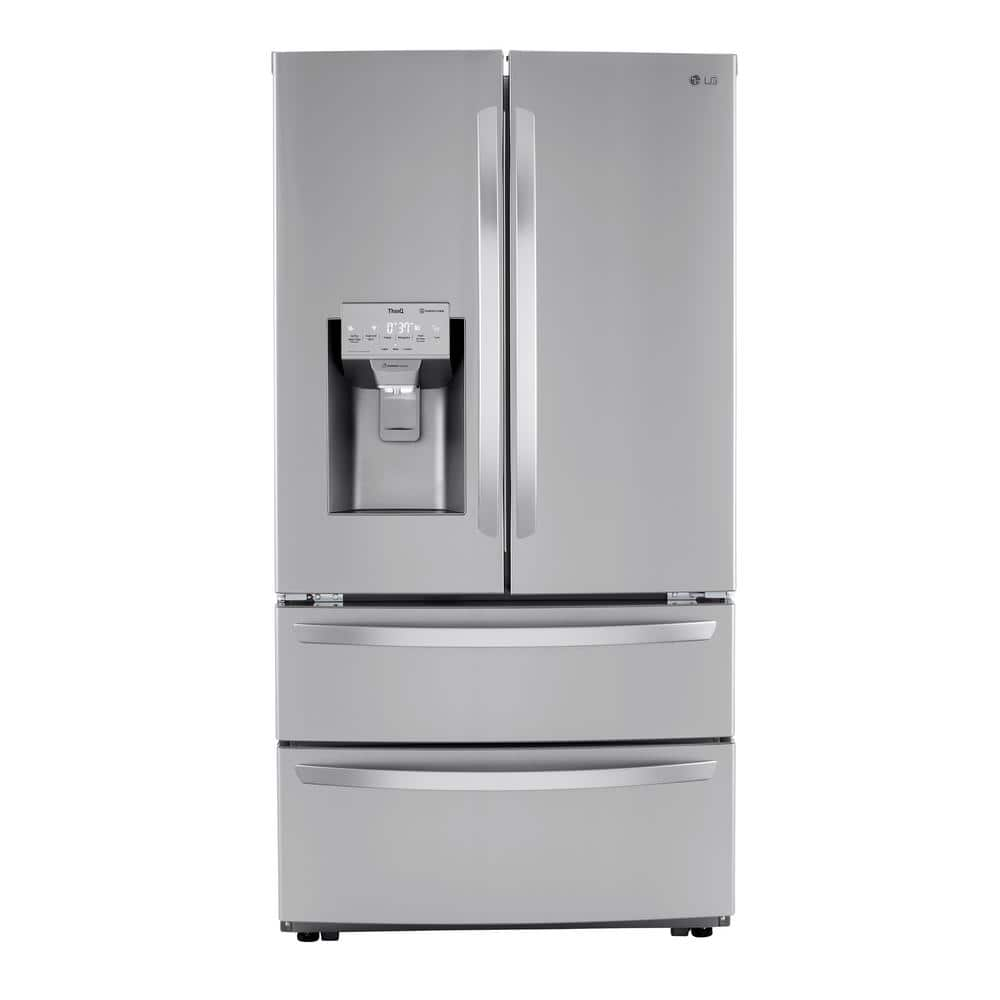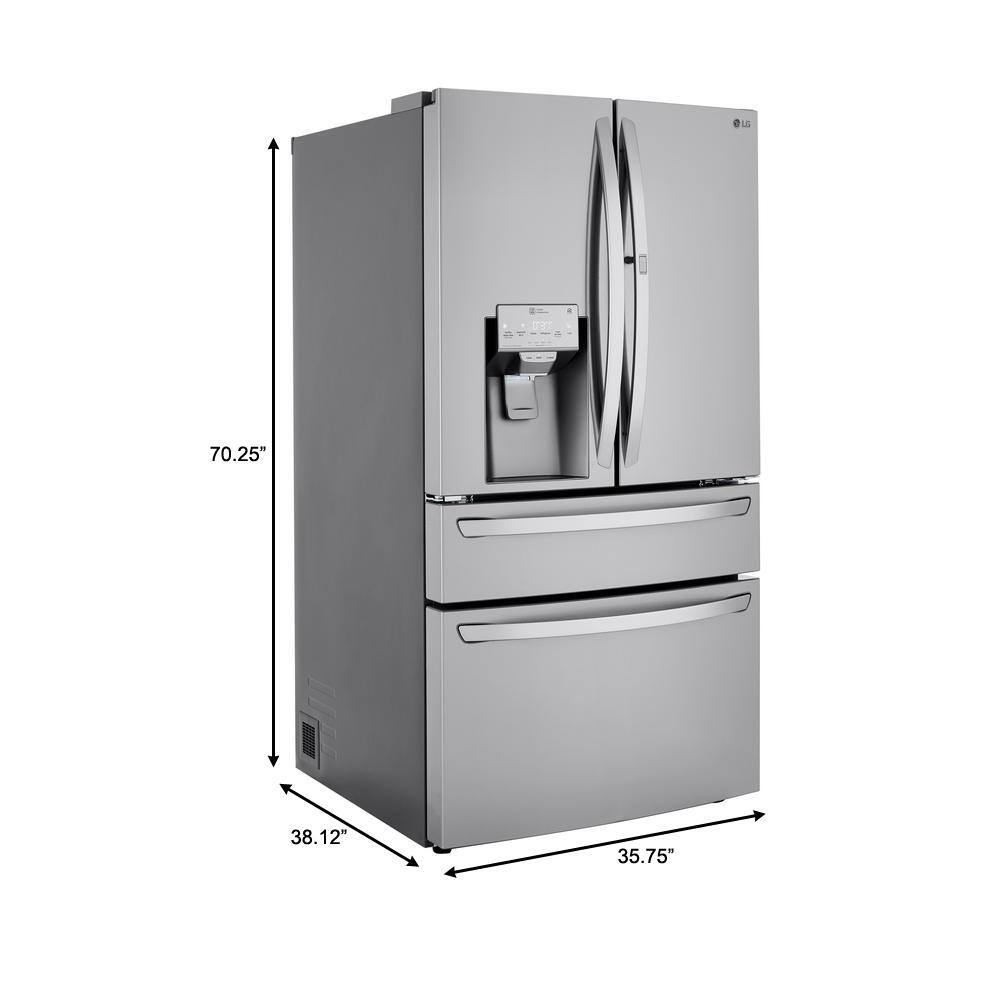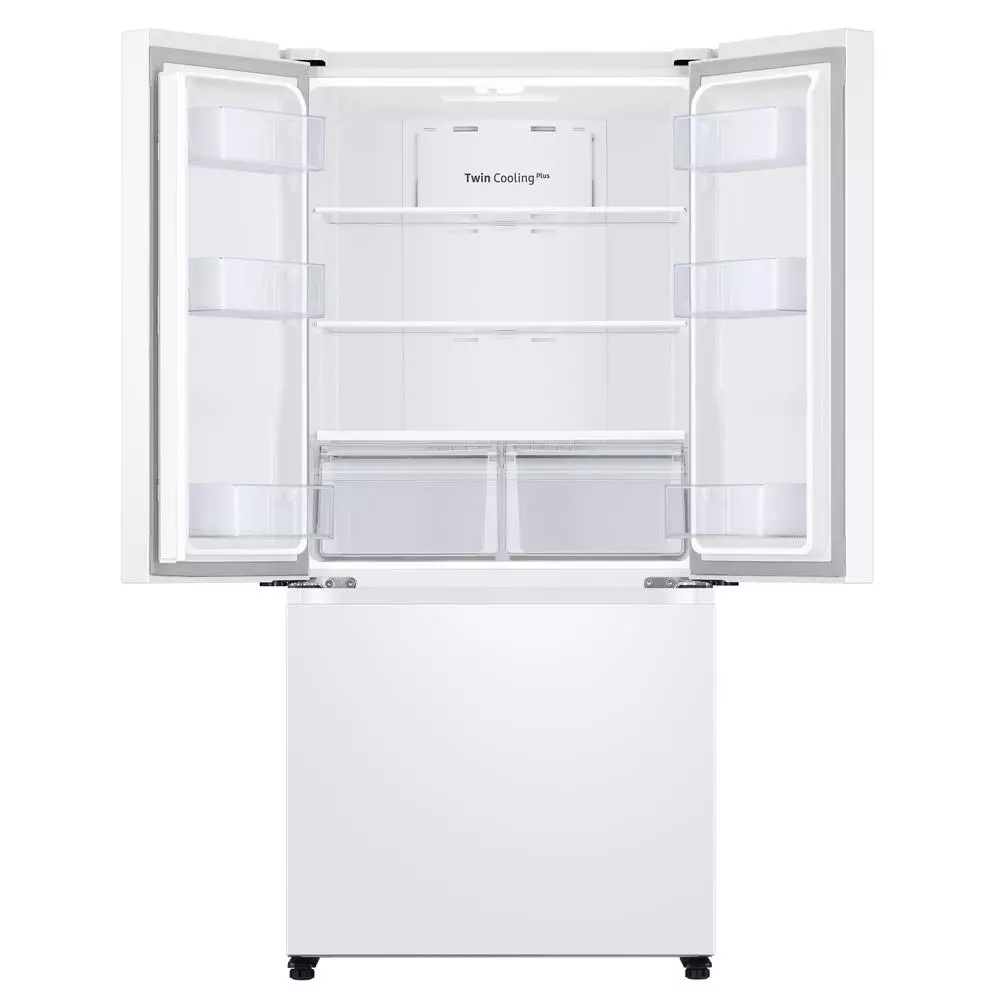LG Electronics 22 cu. ft. 4 Door French Door, Counter Depth, Double Freezer, Dual Ice w/ Craft Ice, Print Proof Stainless Steel
Dual Ice Maker. Double Freezer Drawers. Tall Ice & Water Dispenser with Pharmaceutical Water Filter.
This extra-large spacious French Door Refrigerator from LG features 27.8 cu. ft. of space has double freezer drawers and is ultra-accommodating for all your storage space needs. Boasting a stylish stainless steel finish that is sure to complement your kitchen decor, this refrigerator features a deluxe, extra tall ice and water dispenser that accommodates both pint glasses and pitchers. The Smart Cooling system inside keeps conditions favorable and cool for all of your foods and beverages. With adjustable door bins, split shelves and spacious compartments and drawers, you’ll soon see why this refrigerator is a must-have for every household.
- Energy star qualified to meet or exceeds federal guidelines for energy efficiency for year-round energy and money savings
- Tall ice and water dispensing system in the LG super capacity 4-door refrigerator is one of the tallest around, measuring in at an ultra-accommodating 12.6 in. tall to fit pint glasses to pitchers
- Slim Spaceplus ice system is located on the inside door of the fresh food section, allowing for more shelf space; with added door bin space on the outside of the ice maker, it provides more door bin space for items you need quickly
- LG’s water and ice filter reduces impurities from household water to provide filtered water for up to 6 months (model LT1000PC)
- Electronic controls and LED display operate at just a finger’s touch; they provide easy selection of refrigeration and freezer temperatures as well as water and ice selection, iceplus and child lock
- Smart cooling system is designed to maintain superior conditions within the refrigerator
- Linear compressor reacts quickly to temperature fluctuations and helps keep your food fresher, longer; strategically-placed vents in every section help to surround your food with cool air no matter where you put it
- Spill-proof glass shelves contain spills and simplify cleanup, preventing liquids from leaking onto lower sections; the glide ‘n’ access shelf smoothly slides out for effortless access to hard-to-see and reach food
- Versatile 4-compartment crisper system gives you easy access and more ways to organize your fruits, vegetables and beverages, this refrigerator comes with 2 humidity-controlled crisper drawers, 1 full-width glide-n-serve drawer that fully extends and 1 bonus drawer for fruits and vegetables
- 6 total (2 adjustable gallon-sized) door bins make sure you have ample space to store everything you need. 4 split shelves (3 fixed, 1 folding) make it convenient to store tall items as well as small items
- 17.9 cu. ft. refrigerator compartment and 9.2 cu. ft. freezer compartment provide spacious storage options
- 2 durabase solid drawers are great to store all of your family’s favorite foods; easily removable for cleaning
- Smart diagnosis helps the service center diagnose problems over the phone, helping you troubleshoot quickly
- Premium LED lighting in the refrigerator and freezer section offer long-lasting bright light
- 4-door French door design has 2 refrigerator doors and 2 freezer drawers
- Satin-smooth stainless steel finish is resistant to fingerprints and easily wipes clean with a soft, dry cloth
- Inverter linear compressor is backed by a 10-year limited warranty
Additional information
| Depth (Excluding Handles) | 28.75 in |
|---|---|
| Depth (Including Handles) | 31.25 in |
| Depth (Less Door) | 24.75 |
| Depth With Door Open 90 Degrees (In) | 43.5 |
| Height to Top of Door Hinge (in.) | 69.75 |
| Height to Top of Refrigerator (in.) | 69.75 |
| Product Depth x Height x Width (in.) | 31.25 x 69.75 x 35.75 |
| Refrigerator Width (In.) | 35.75 |
| Certifications and Listings | CSA Listed,Energy Star |
| Manufacturer Warranty | Limited Warranty: 1 Year Parts and Labor, 5 Years Sealed System (Parts & Labor), 5 Years Compressor (Parts & Labor), 6-10 Years Linear Compressor (Parts Only) |






by Tammy
Great machine – awesome size and so far, no issues.
by Sabrina
beautiful and delivery was flawless!!!
by Rob
So Quiet & Roomy for a counter depth.
by Wills
Love this refrigerator the capacity is immaculate, never going to be a space issue. Lighting is bright and has great features such as the craft ice
by David
So far this refrigerator has not only met but exceeded our expectations. It is exactly what we were looking for. However it has only been a few weeks. Hopefully we will continue to be this happy with our new LG fridge for years to come.
by Louis
This was our frig in a new build custom home. The unit is well designed. It runs quietly and produces ices via the door and via the craft ice dispenser in the lower freezer. Craft ice made my friends jealous! Plenty of room and the shelving is flexible to hold various shaped containers. Door storage is adequate as well.
by Vasques
Working good so far and has a lot of room.
by Kathryn
Now I don’t have to go to the store and buy ice anymore.
by Debbie
So far so good! Loving our new fridge.
by Darlene
My LG Smart Counter depth refrigerator is GREAT! It had the two ice makers I wanted, since the in-door ice maker does not make enough for my family needs. If I had to find one thing I do not like about my new LG frig, it would be that the bottom drawer of the freezer section does not have a light.